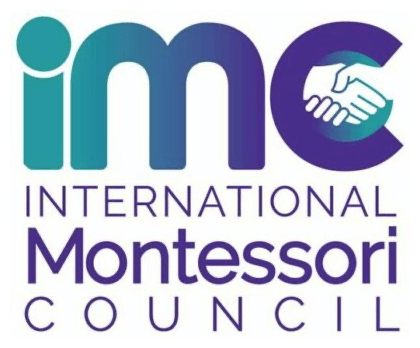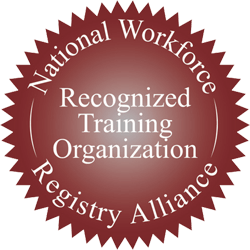Secondary Program Cornerstones
The Cornerstones of the CGMS Secondary Training Program
There are three cornerstones of the CGMS Secondary Montessori Training program:
- Transformation of the Guide
- The Secondary Album
- A practice that is guided by 6 Pillars
PART I – The Guide
“The real preparation for education is the study of one’s self. The training of the teacher is something far more than the learning of ideas. It includes the training of character; it is a preparation of the spirit.”
— Maria Montessori, The Absorbent Mind
Anyone can learn to teach. It takes transformation to become a guide. We do this through:
- Love
- Observation
- Renewal
- Adaptability
- Humility
- Discovery
- Exploration
- Innovation
- Collaboration
- Grace
Our goal is not to fill empty vessels with content, but rather to find ways to support the emerging humanitarian, entrepreneur, scientist, creator, educator. What we present through our syllabus and provide in our prepared environments must be carefully curated. Providing content is only one part, and not necessarily the bigger part, of our purpose. English, history, science, math, and so forth are very important concentrations. But they are still mere platforms from which the soul of our learners can embark on their more important cosmic task.
We guide our learners in their holistic development through:
- providing meaningful and authentic work
- a developmentally appropriate learning environment
- challenges that promote self-discipline and reason
- opportunities for both independence and collaboration with peers
Operating from the premise that there are as many teachers as there are people in the room, we learn from observation and from what our adolescents reveal in their work. We save the space for each and every one to find their strengths, master their goals, and find their purpose and inner drive. Understanding this and finding ways to implement a strategy to accomplish this, learner-by-learner, is transformative – not just for our students but ourselves, as well.
CGMS Montessori Secondary training supports transformation but is hopefully neither the beginning nor the end of it. Transformation must be ongoing.
Of utmost importance to our effectiveness as a guide is a pursuit of our own inner well-being. As important as the preparation of the environment is our continual preparation through renewal. However this is achieved in one’s life, it must precede work with young adult learners. Knowledge of and compassion for ourselves, first as individuals and then as guides, is vital to preserving freshness and continuity for our learners.
Part II The Album
“The teacher’s task is not to talk, but to prepare and arrange a series of motives for cultural activity in a special environment made for the child [adolescent].”
— Maria Montessori, The Absorbent Mind, p. 7
One hallmark of Montessori training is the Album – both the act of creating it and the use of it as a resource. The Secondary Album is the place to celebrate all that an Adult Learner has done and learned in the CGMS Secondary training and certification journey. It documents this journey with artifacts of growth and is a unique and ever-developing resource for ongoing support of a meaningful and transformative teaching practice. It is the culminating project and evidence of an Adult Learner’s readiness to be certified as a Montessori Guide for Secondary I and II. The Secondary Album will be created throughout Secondary training with the completion of each course. A type of museum, it represents the collection, care, study, and display of what will become of lasting value to its creator.
Components of this Album:
- Education Philosophy
- Teaching Philosophy
- Coursework, including study guides
- Evidence of Farm, Business, Museum
- Final Exam
- Completed MACTE and CGMS Competencies Assessment Chart
- Resources from coursework, cohort collaboration, residencies, and retreat
Part III : The Pillars
“But, above all it is the education of adolescents that is important, because adolescence is the time when the child enters on the state of manhood and becomes a member of society.”
— Maria Montessori, From Childhood to Adolescence
Through observation and preparation, we as guides have come to understand the unique developmental needs of the adolescent, the importance of the prepared environment, and the irreplaceable relationship of Guide and Learner.
What adolescents need:
- Independence
- Community
- Adaptability
- Self-expression
- Self-reflection
- Choice
- Context
- Grace and courtesy
- Feedback
- Respect
- Love
To satisfy these needs, Montessori Secondary Prepared Environments offer learners:
- An integrated approach to learning
- A stake in their education
- Authentic experiences
- Opportunities to develop abstract thinking
- The space to come to their own conclusions
- Movement and a physically healthy environment
- An understanding and appreciative guide
- A guide who understands not only subject content but the Montessori method
- Close connection with fellow students and a role in community
- A sense of their of their own worth and individual gifts
- The ability to make and learn from mistakes
- Respect as a young adult and not as a child
- Service opportunities
- A small school setting, even within a large school
- Field experiences
- Rigor
- The expectation of continual “conscious cosmic view”
- Experiences that stimulate interests and activate imagination
- Personalized learning experiences
CGMS Secondary has adopted six pillars, or standards, that we feel support a holistic approach to meeting the developmental needs of Montessori adolescent learners:
- Multi-Age Classrooms
- Montessori “materials” that at the secondary level include field experiences, Socratic Seminar Discussions; a study guide that supports independence, collaboration, adaptability, inquiry, coping with ambiguity; daily Community Meeting; and so much more.
- Evidence of Erdkinder principles
- Student-centered, inquiry-based work.
- Uninterrupted Work Cycles:
- Strategy for practicing self-reflection and self-renewal – both for adolescent learners and guides.



